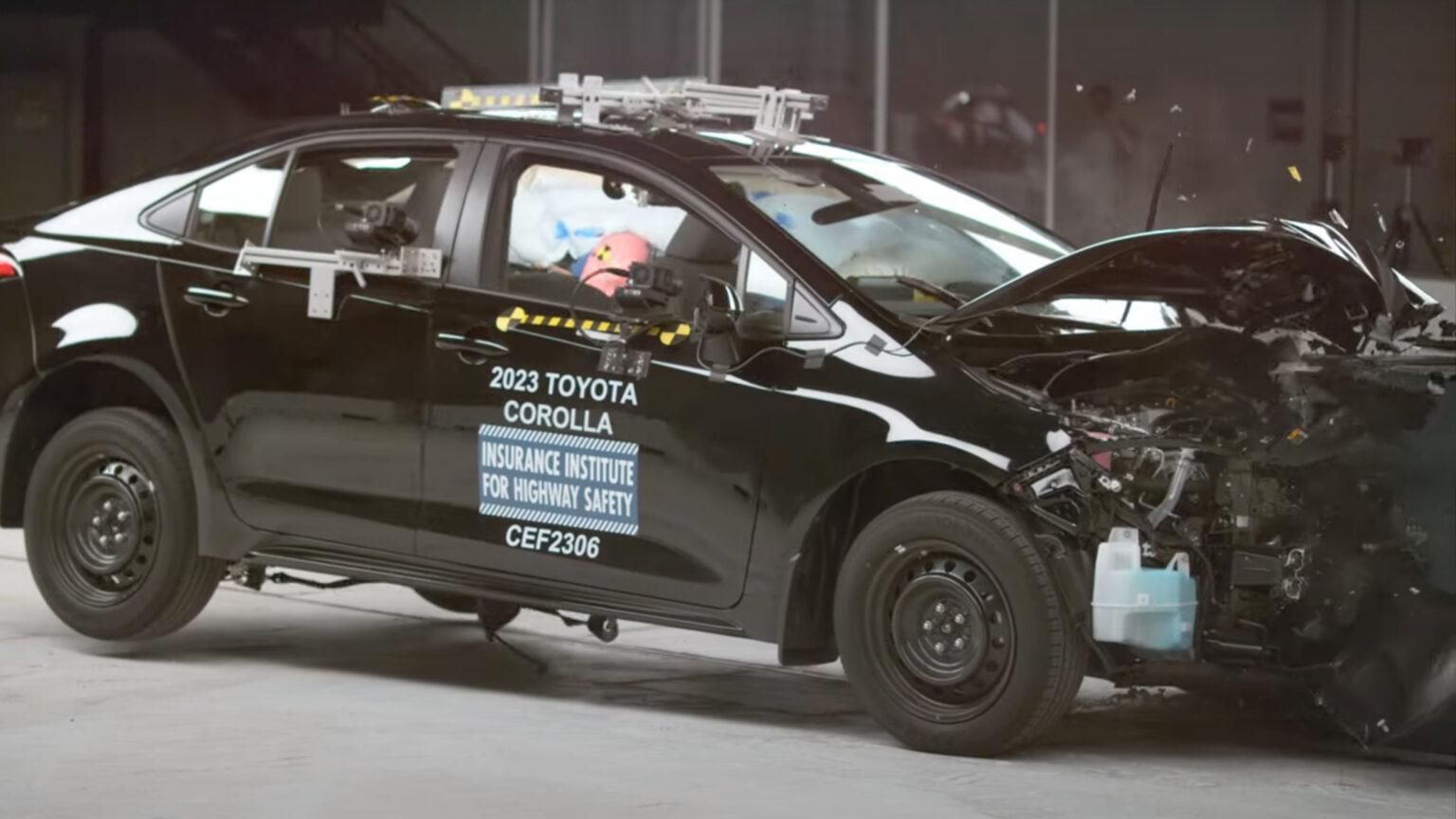Automakers focus on front-seat safety to a high degree because there will always be at least one person there when the vehicle is moving. At the same time, back-seat safety seems to have taken, well, a back seat. The Insurance Institute for Highway Safety recently said that small cars don’t do a good enough job at protecting passengers in the back seat, and the organization said the results highlight the need for its new, stricter crash test standards.
The IIHS updated its moderate overlap front test last year and added a more intense side-crash test this year. Research showed that occupants in the back seat were at higher risk for injury than those in the front, but it’s not because new vehicles’ back seats became less safe overnight. The change is a reflection of the increase in safety for front-seat passengers, reducing their chances of serious injuries in a crash. Even so, the IIHS said the back seat is still the safest place for children due to the potential for airbag-related injuries.

Changes in crash-test standards included requiring vehicles to reduce the risk of injury to the head, neck, chest, abdomen, and thigh. The dummy has to remain correctly positioned in the seat and cannot slide down in the seatbelt. Injury-causing forces are measured using sensors on the dummy’s torso.
The IIHS tested five small cars in the updated moderate overlap front crash scenario, assigning scores for how well they protected the driver and rear passengers against injury. Vehicles in the test include:
- 2023 Honda Civic Sedan: Acceptable
- 2023 Toyota Corolla Sedan: Acceptable
- 2023 Kia Forte: Poor
- 2023 Nissan Sentra: Poor
- 2023 Subaru Crosstrek: Poor
All five cars earned “Poor” scores for rear passenger restraints and kinematics. Front passenger safety was generally good for all models, but the results became mixed in the back seat tests.
None of this is to say that you should avoid buying a small car or that SUVs and minivans are the only acceptable family vehicles. It is, however, a reminder to make sure that your child’s seats are properly installed and that you carefully check the seatbelt position for children riding in the back seat. It’s important to note that, despite spotty back-seat safety scores, many small cars come standard with a host of advanced safety gear. The Honda Civic and Toyota Corolla both get complete suites of advanced driver aids, while the Kia Forte offers several, including automatic emergency braking and pedestrian detection.

It’s a good idea to check the safety scores of any vehicle you’re considering buying, even if it’s an older model. The IIHS database stretches back years, making finding the scores you’re looking for easy. Check the crash testing notes, too, as many times, a specific trim or configuration performs better than others. That’s especially true with headlight testing, where more advanced, higher-priced trims often get higher-scoring headlight configurations.








